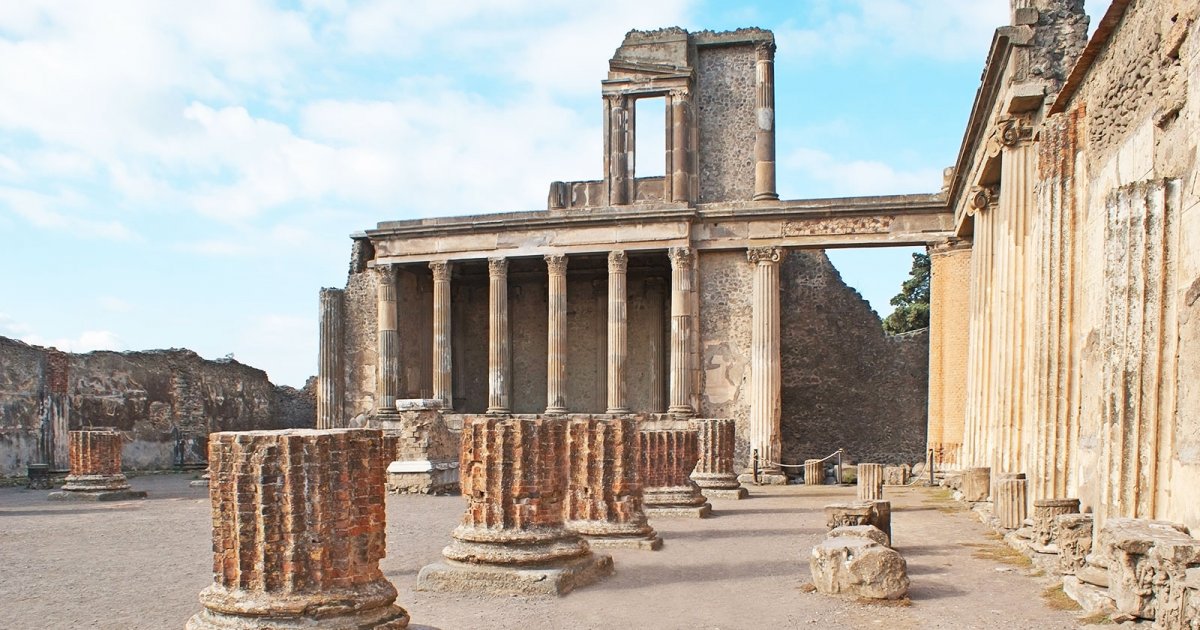POMPEI INTRODUCTION, History
 Language: English / USA
Language: English / USA
Now let me tell you a bit about the history of Pompeii, which has origins as ancient as Rome. In fact, the Gens Pompeia descended from the Osci, one of the first Italic peoples, who founded and gave this first urban aggregate its name more or less around the time when Rome was established. The fact that the city was preserved, buried as it was by the lava from the eruption of Mount Vesuvius in 79 AD all the way up to the excavations that began in the seventeenth century, helps us understand how a Roman city was structured, how houses were built, and infinite other details.
Three centuries after its foundation Pompeii was already a considerable city, superior to the nearby centers of the Vesuvian area, including Neapolis, which was rather modest then. As a proud and autonomous center of Italic populations, in 89 BC Pompeii fell under Roman administration. The inhabited center was enlarged and the palaces, streets, and urban furnishings were restructured. In the imperial era sidewalks were added, the forum was transformed into a pedestrian area, the public baths and thermal baths were enlarged, and a large amphitheater was built. In the middle of the first century AD, its population was about 25,000. In the year 62 it was hit by an earthquake that was so severe that 17 years later when the eruption occurred, several buildings were still being reconstructed. The town was surrounded by a wall and sat on 66 hectares of land, about three-fifths of which have been unearthed up to now. Most of the objects found in Pompeii can be admired in the National Archaeological Museum of Naples, but many were also exported, and almost immediately: the British ambassador William Hamilton sent home two ships full of finds.
One of the most recent finds is the newly rediscovered Antiquarium, where you won't easily forget the plaster casts of Pompeians killed by the eruption and fixed in dramatic and moving poses.
Lastly, even though the two cities are always named together, I'd like to point out that the eruption had very different effects in Pompeii and Ercolano. The inhabitants of Pompeii were overrun by a shower of burning fragments and a cloud of hot gas and had no way out, while those from Ercolano could safely escape from the slow flow of lava and mud.
FUN FACT: the streets of Pompeii had a size that had been calculated for letting wagons pass. The distance between one wheel and the other determined the width of the rails when the route of the Circumvesuviana railway was built!



